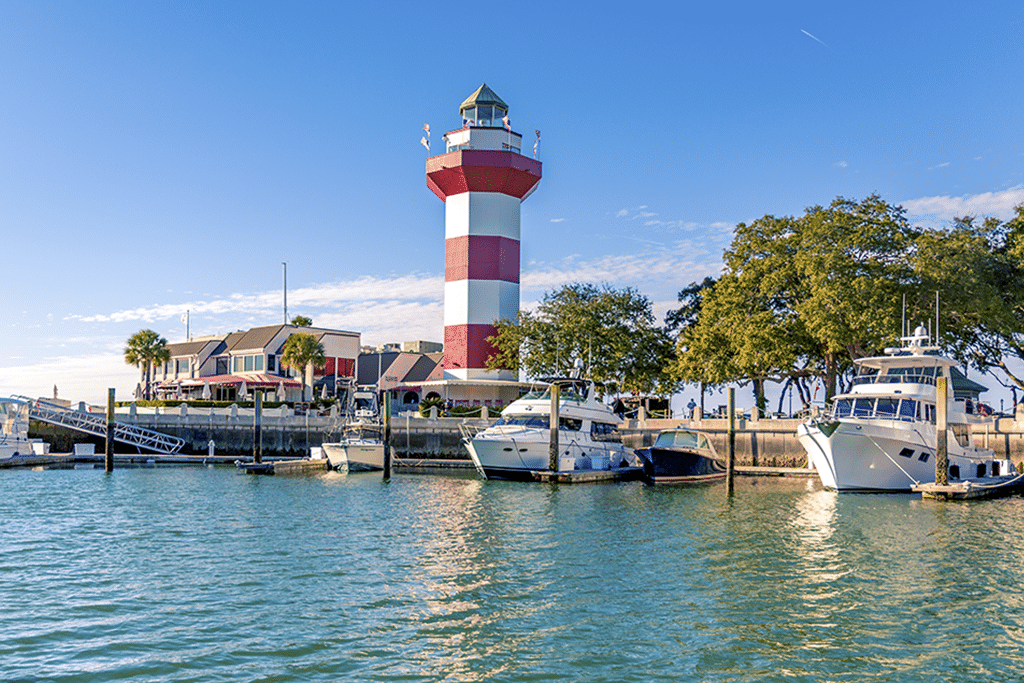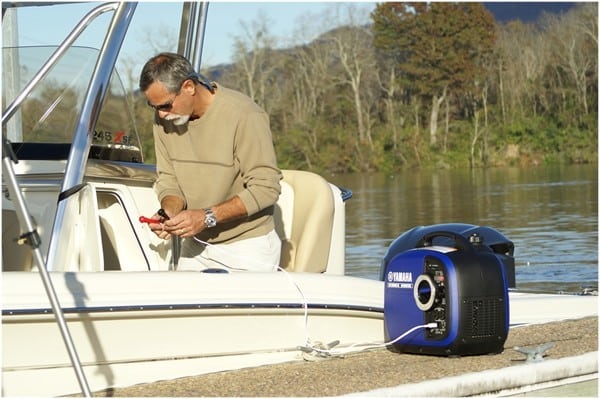Southern Charm
Create memories and take the time to experience a cruise along South Carolina’s ICW.
Written by: Bob Arrington
South Carolina may not be the longest stretch of the Atlantic Intracoastal Waterway (ICW), but it certainly holds one of the prettiest sections. From the North Carolina border at Little River Inlet to the Savannah River at the Georgia border, the ICW runs through 235 miles of South Carolina’s most picturesque and historic treasures.
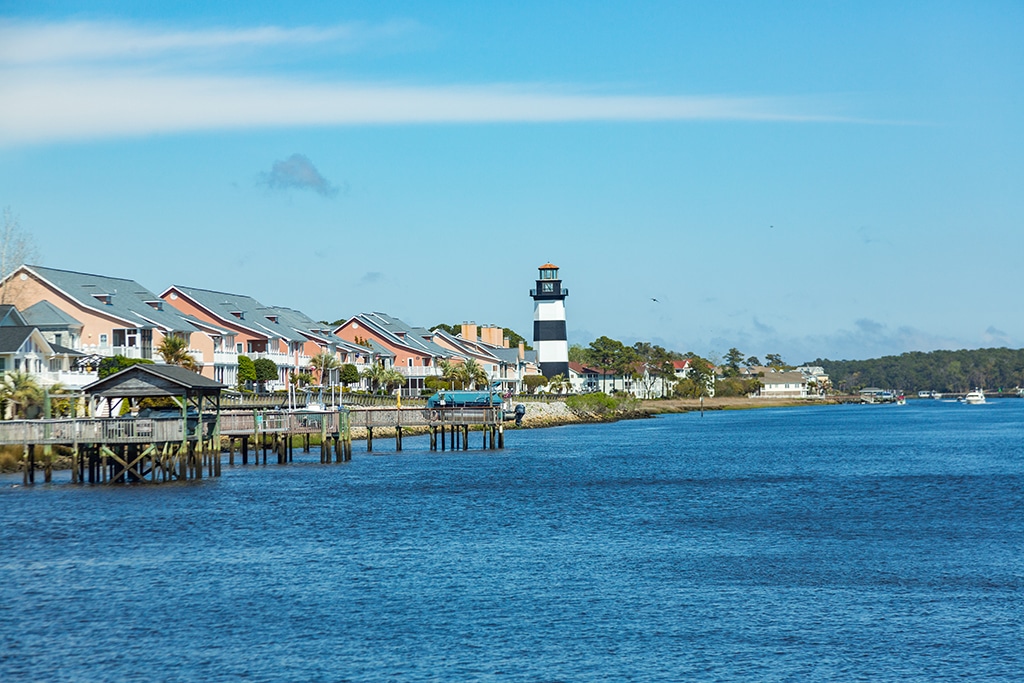
Start the journey in one of the South’s most popular coastal towns, Myrtle Beach, where the ICW parallels the famous Grand Strand and runs adjacent to some of the area’s premier golf resorts. Myrtle Beach is also home to the notorious “Rock Pile,” a treacherous segment of the ICW feared by many first-time cruisers. The bottom along most of the ICW is sand or soft mud; however, there is a small section through Myrtle Beach with a rocky bottom and abrupt ledges that extend along the sides. None of the rocks are visible at high tide, but the ones along the edges are clearly seen at low tide. Running aground in most of the ICW is a nonevent and usually only requires waiting for high tide, or a quick tow off, before you’re on your way again. Running aground in the Rock Pile, though, is likely to damage your boat. Once you’ve been through the area, you’ll realize it’s not as frightening as it sounds. There is plenty of depth in this section as long as you stay in the middle of the channel.
Leaving Myrtle Beach, the ICW enters what many consider the most pristine natural section of the entire waterway, the Waccamaw River. The river meanders its way through ancient bald cypress forests in the Waccamaw National Wildlife Refuge, home to black bears and bald eagles. The refuge’s undeveloped shoreline gives the passing boater the impression they have cruised back in time by thousands of years.
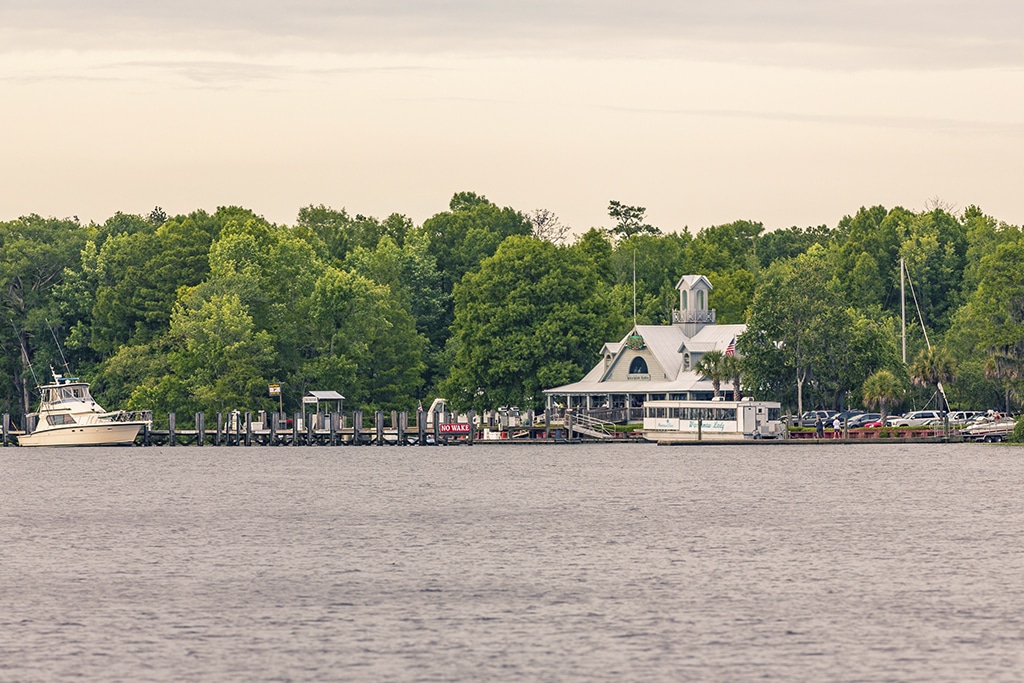
Sailing through the Waccamaw brings a boater into the headwaters of Winyah Bay, where the Waccamaw joins the Sampit and Great Pee Dee rivers. It was at this confluence where early settlers established the trading post that would eventually become the port city of Georgetown. Since its founding, Georgetown has been an important part of South Carolina’s history. As a frequent world leader in the production of indigo, rice, lumber, paper, and steel, Georgetown’s economy has evolved with the times. Today, the historic district is a living time capsule of a bygone era. Live oak trees that were planted at the time of the town’s founding still shade the streets and avenues. Georgetown’s waterfront has always been a working district; fishing and industry take advantage of the river’s bounty and easy access to the ocean. The waterfront welcomes boaters today with a lively mix of history, culture, and entertainment.
Continuing south along the ICW, the waterway passes one of South Carolina’s hidden gems: the little fishing village of McClellanville. Originally formed as the Church of England’s St. James-Santee Parish in 1706, it was a diverse mix of French Huguenots and English settlers, both trading successfully with the indigenous Sewee Indians. The area lent itself to a rich agrarian economy also based on indigo, rice, and cotton, and by the mid-1700s, grand homes had been built showing the parish’s prosperity. Many are still standing and have been lovingly preserved. McClellanville may have more historic homes for a town of its size than any other in the South. Much of the town’s most interesting history is told through exhibits at the Village Museum. The displays establish a time line beginning with the villages of the Sewee Indian tribe, who inhabited the banks of Jeremy Creek. The water in Jeremy Creek is pretty shallow at low tide, so check the depths before planning your visit to see South Carolina’s largest fleet of commercial shrimp boats. The friendly folks at Leland Oil Company’s marina will be happy to help you. Some of the largest tides and swiftest currents on the Eastern Seaboard occur along the South Carolina coast; pay close attention when navigating the area.
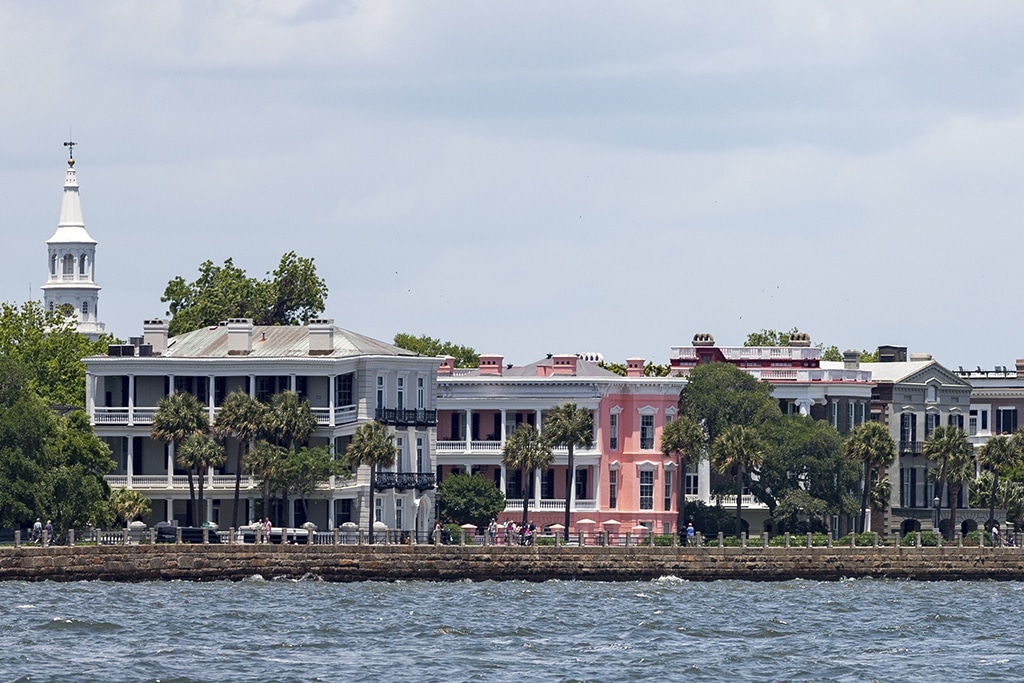
The ICW from Winyah Bay to Charleston Harbor is a combination of manmade canals and natural waterways separating the Bonneau Ferry Wildlife Management Area from the largely uninhabited coastal barrier islands. You’ll know you’re nearing Charleston when you pass the barrier island towns of Isle of Palms and Sullivan’s Island with its triangular black and white block lighthouse.
A very popular boating destination, Charleston is the oldest and largest city in South Carolina. Art, entertainment, food, history, architectural treasures, culture, and natural beauty combine to make Charleston a veritable feast for the senses. It is a city that draws you back again and again with each visit revealing one more layer of its charm.
Cross the Saint Helena Sound to Beaufort, in the heart of what is known as the Lowcountry, along South Carolina’s Sea Islands. Note that the Beaufort in South Carolina is pronounced “Bew-furt,” and the Beaufort in North Carolina is pronounced “Bō-furt.” You will be politely corrected in either place if you confuse them.
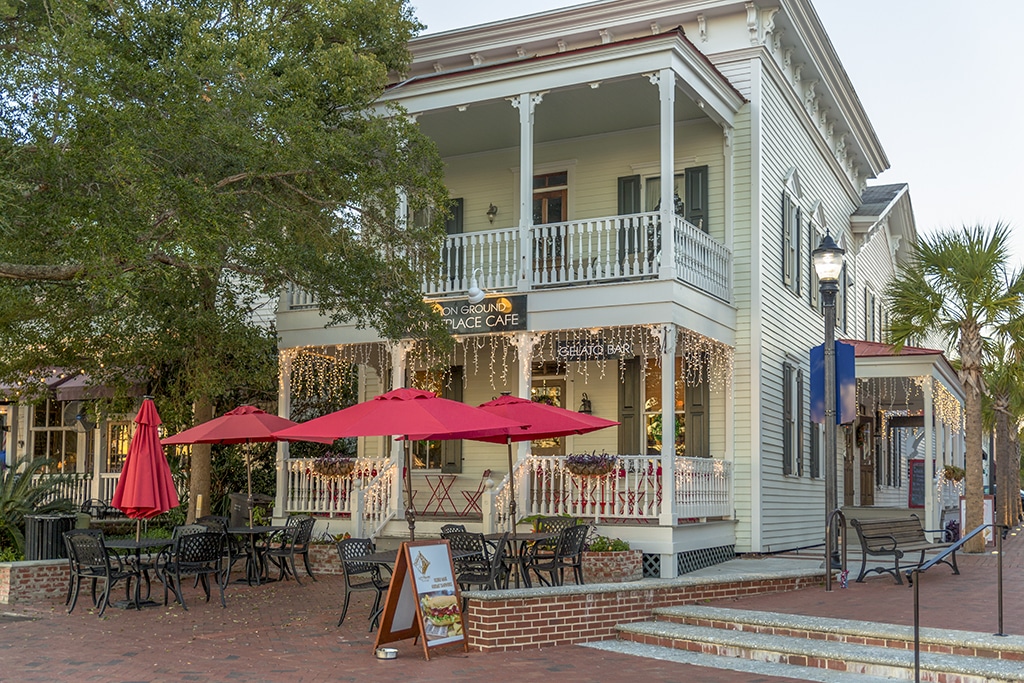
Beaufort was founded in 1711 as the second-oldest city in South Carolina. Its location on the navigable Beaufort River has made it a valuable deepwater port for more than 300 years. Beaufort had the mixed blessing of being one of the first cities in the South to be occupied by union troops only a few months into the Civil War. The fortunate part of that is most of the town’s structures were saved as housing for the northern army during the war. Although the local residents didn’t take to that kindly at the time, today’s residents have made the best of it by restoring many of the historic homes. As a result of this careful preservation, 300 acres of the city have been designated as a national historic landmark. The collection of antebellum architecture has drawn the attention of more than one Hollywood director with such movies as The Great Santini, The Big Chill, The Prince of Tides, Forrest Gump and G.I. Jane all filmed on location. The Downtown Marina of Beaufort is under new ownership with renovations planned to welcome seasonal boaters to stop for a spell.
The last stop in South Carolina for most southbound boaters will be Hilton Head Island, originally developed by Charles E. Fraser, the son of an early island land owner. During the 1950s, Fraser saw the opportunity to build a resort community that would maintain the island’s natural beauty. His vision became Sea Pines Plantation, the first planned community and the basis for all that would follow. The first bridge was built in 1956, allowing easy access to the new resorts. This opened the island’s beaches and beauty to visitors and the future residents who enjoy the popular world-class town we know today. Numerous marinas are available to provide the visiting boater with access to some of the best golf, shopping, and dining the South has to offer.
If you give in to South Carolina’s traditional laid-back lifestyle, which encourages boaters to take their time when passing through, you will be rewarded with a very memorable experience.
Attractions Along the Way
Myrtle Beach
Marinas:
Myrtle Beach Yacht Club
(843) 249-5376
myrtlebeachyachtclub.com
Barefoot Marina
(843) 390-2011
waterwayguide.com
Grande Dunes Marina
(843) 315-7777
grandedunes.com
Restaurants:
Simply Southern Smokehouse
(843) 839-1913
simplysouthernsmokehouse.com
Things to do:
The Dunes Golf & Beach Club
(843) 449-5236
thedunesclub.net
Georgetown
Marinas:
Georgetown Landing Marina
(843) 546-1776
georgetownlandingmarina.com
Harborwalk Marina
(843) 546-4250
harborwalkmarina.com
Restaurants:
River Room
(843) 527-4110
riverroomgeorgetown.com
Big Tuna Raw Bar
(843) 546-1045
bigtunarawbar.com
Things to do:
Hopsewee Plantation
(843) 546-7891
hopsewee.com
The Rice Museum
(843) 546-7423
ricemuseum.org
South Carolina Maritime Museum
(843) 520-0111
scmaritimemuseum.org
McClellanville
Marinas:
Leland Oil Company
(843) 887-3641
waterwayguide.com
Restaurants:
T.W. Graham & Co.
(843) 887-4342
twgrahamcoseafood.webs.com
Things to do:
Village Museum
(843) 887-3030
villagemuseum.com
Charleston
Marinas:
Charleston City Marina
(843) 723-5098
charlestoncitymarina.com
Charleston Harbor Marina
(843) 856-0028
charlestonharbormarina.com
Restaurants:
FIG
(843) 805-5900
eatfig.com
Husk
(843) 577-2500
huskrestaurant.com
Things to do:
Historic Charleston City Market
(843) 937-0920
thecharlestoncitymarket.com
The Charleston Museum
(843) 722-2996
charlestonmuseum.org
Beaufort
Marinas:
Downtown Marina of Beaufort
(843) 524-4422
waterwayguide.com
Port Royal Landing Marina
(843) 525-6664
portroyallandingmarina.com
Restaurants:
Saltus River Grill
(843) 379-3474
saltusrivergrill.com
Plums
(843) 525-1946
plumsrestaurant.com
Things to do:
Hunting Island State Park
(843) 838-2011
southcarolinaparks.com
Hilton Head Island
Marinas:
Harbor Town Yacht Basin at The Sea Pines Resort
(843) 363-8335
seapines.com
Shelter Cove Harbour & Marina
(866) 661-3822
sheltercovehiltonhead.com
Restaurants:
CQ’s
(843) 671-2779
cqsrestaurant.com
ELA’s on the Water
(843) 785-3030
elasgrille.com
Things to do:
Coastal Discovery Museum
(843) 689-6767
coastaldiscovery.org
Golf at Sea Pines Country Club
(843) 671-2345
seapinescountryclub.com


